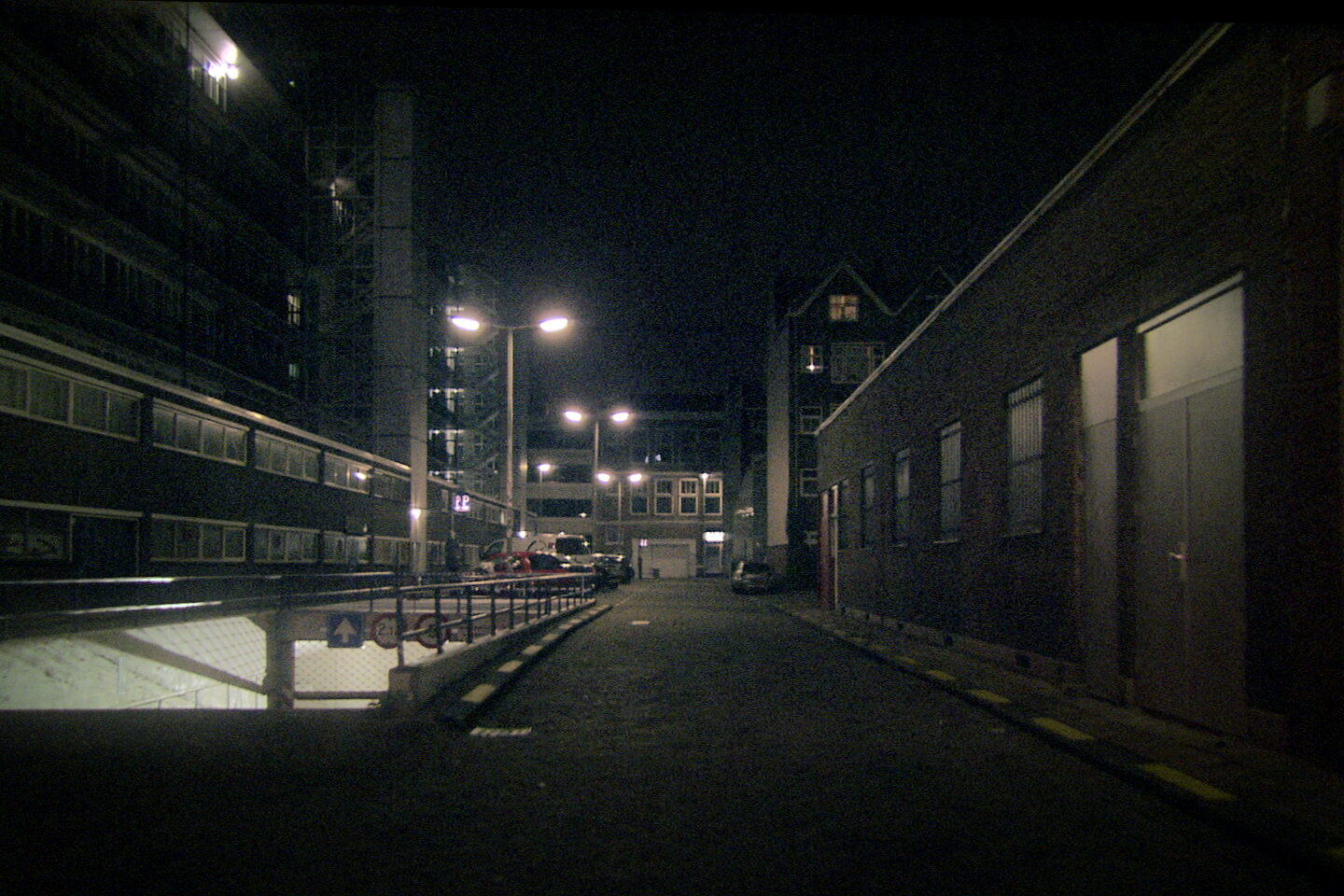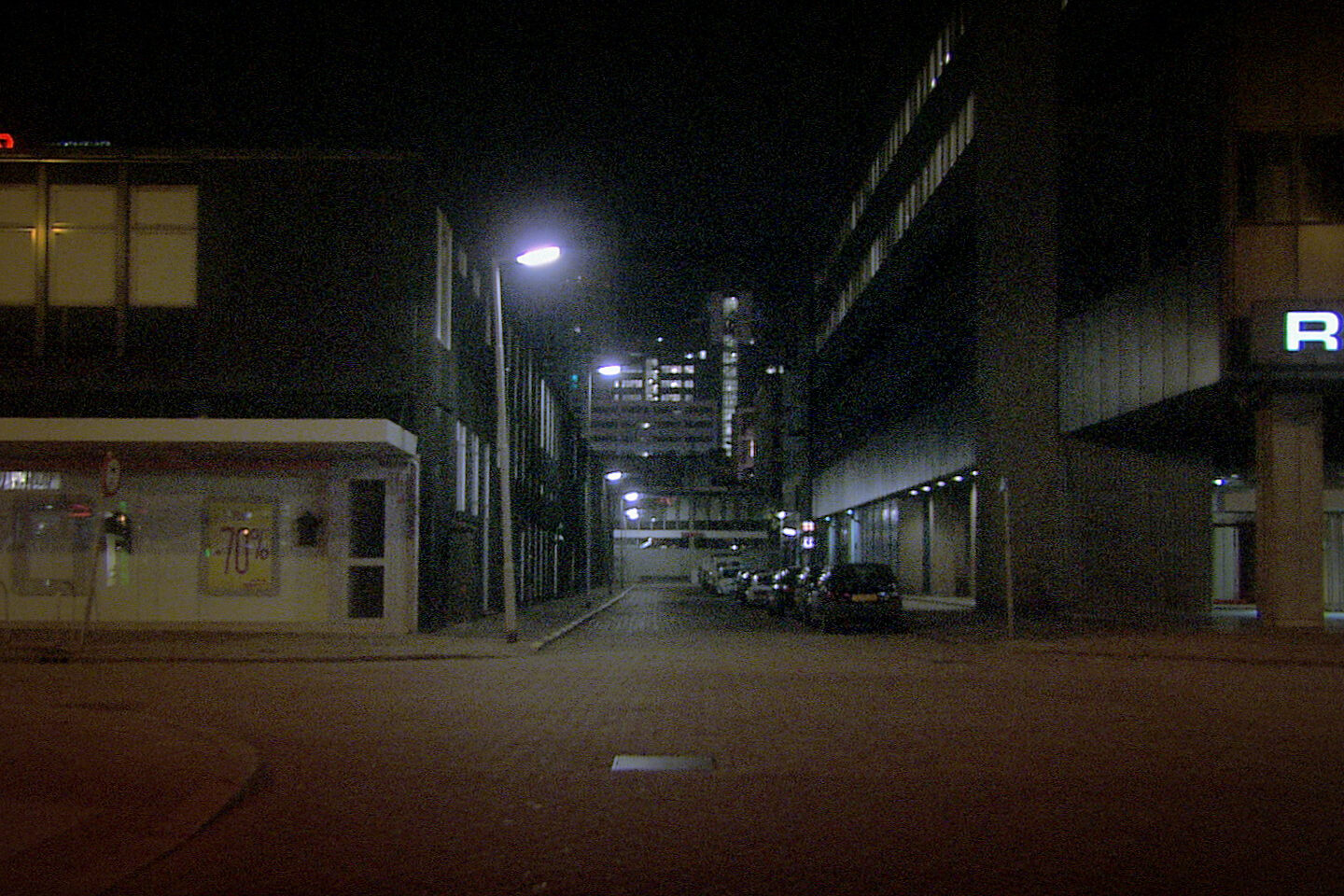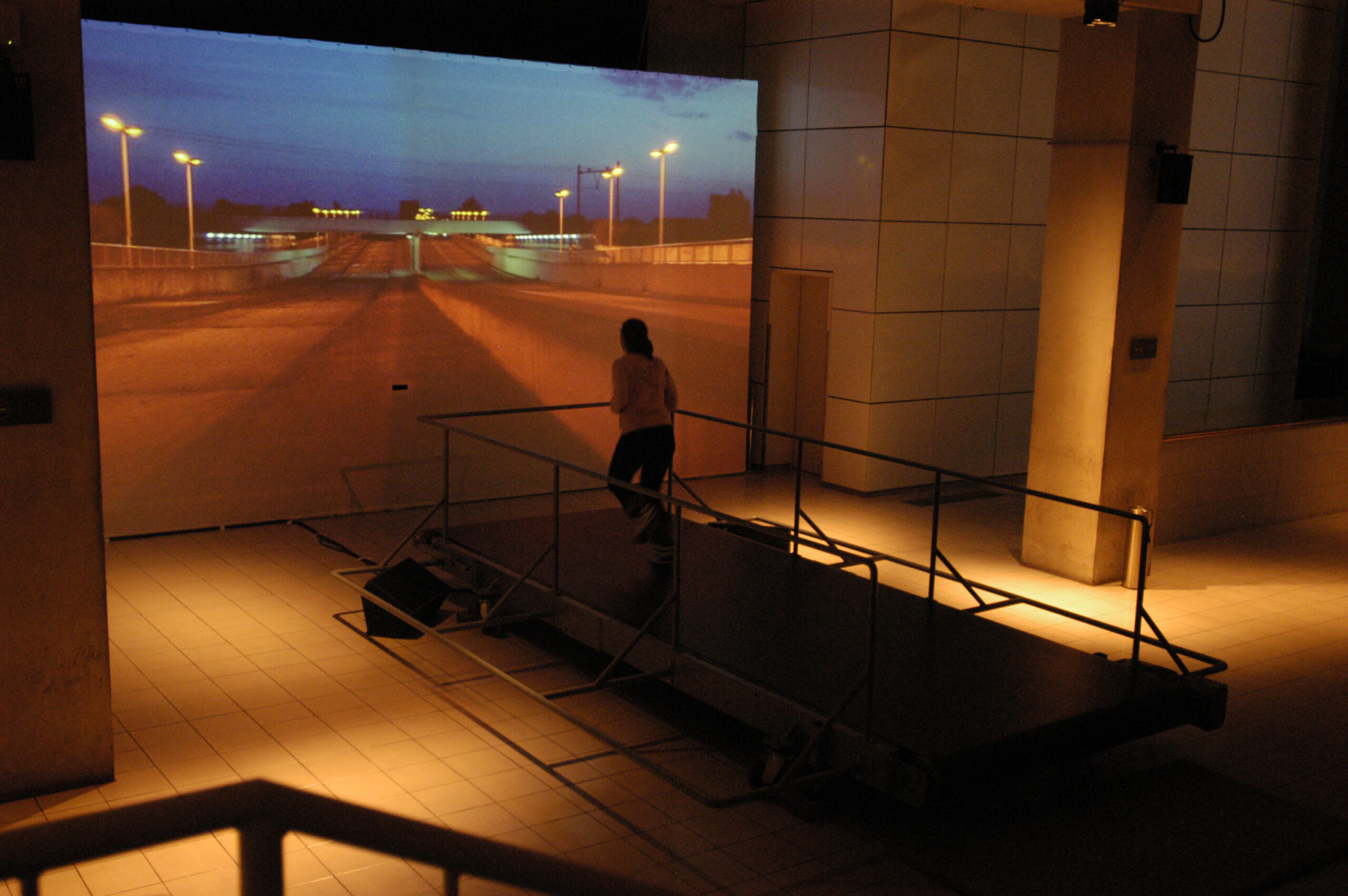In “Run Motherfucker Run,” the body becomes the controller: those who run experience virtual immersion—those who stop fall. A powerful critique of passive consumption in digital worlds.
Since 1979, Ars Electronica has been doing pioneering work—building bridges between disciplines, serving as a platform for new alliances, and providing impetus for an open, inclusive dialogue about our future. In collaboration with artists from around the world, we realize and present projects that challenge conventions and anticipate developments.
For this series, we asked members of the Ars Electronica team to dive into our archive—the world’s largest of its kind—and select a project that has personally touched, inspired, or challenged them, and to tell us why this project is relevant today. Together, we embark on a journey to milestones of the so-called digital revolution. Milestones that were cutting edge.
In this issue, Vanessa Hannesschläger, Head of European Collaboration, gives us an insight into a project that combines physical exertion with digital immersion: “Run Motherfucker Run” by Marnix de Nijs challenges the audience on a high-speed treadmill to gain control of a virtual world – or lose it.
Which project did you choose?
Vanessa Hannesschläger: The Ars Electronica Archive is filled with visionary projects, groundbreaking ideas, and moments of pure creativity. Where do you even begin? Which work stands out from the crowd? For me, the decision was surprisingly easy. As soon as I received the invitation to select a project for this series, one immediately sprang to mind: “Run Motherfucker Run” by Marnix de Nijs, which received an Honorary Mention in the “Interactive Art” category at the Prix Ars Electronica 2005.
Tell us what this project is about.
Vanessa Hannesschläger: Imagine: It’s late at night. We leave a crowded club, our ears still ringing from the bass, the street lies dark before us – and suddenly we’re running. Where to? Why? No time for questions, only movement counts.
Run Motherfucker Run captures this feeling and turns it into a program. In this interactive installation, the body becomes the controller: visitors run on a treadmill, directly into a dark, virtual world. Those who run faster move ahead more quickly. Those who slow down see the image blur, as if reality itself is slipping away. But where does this run lead? Everyone chooses their own path through narrow alleys and dark streets. Only one thing is certain: those who lose their strength too early will land hard, but at least cushioned, on the mattress behind the treadmill. While one person runs, others watch. It’s like a stage play with a changing lead role. Some cheer, others laugh, and still others hold their breath.

Why was this project outstanding in your opinion?
Vanessa Hannesschläger: What particularly fascinates me about “Run Motherfucker Run” is that, even with the relatively simple technology available at the time, it creates an experience that still resonates today. Visitors don’t just run toward a projected image. They are drawn in step by step. The faster the projection races, the stronger the feeling of falling into this dark, digital world. A suction effect is created. And those who can’t keep up are thrown out.
The work feels like full-body doomscrolling. Instead of swiping through endless feeds with your thumb, your whole body runs through a virtual endless loop. And at the end? The inevitable collapse. Mentally in everyday life, very real in the installation.
Marnix de Nijs achieves what many attempt but few truly accomplish: he combines physical presence with digital immersion, thereby turning the conventional logic of commercial virtual reality experiences on its head. While the virtual world often makes us forget that we even have bodies in everyday life, “Run Motherfucker Run” brutally reminds us that there is a human being who sweats, stumbles, and runs. The avatar is never alone.
It is precisely this deliberate exaggeration that makes the work so powerful. De Nijs doesn’t need headsets, haptic suits, or tech gadgets. He combines existing machines in such a clever way that a completely new perspective emerges—one that makes us pause. And then start running again. I like this approach: the simplicity, the physical force, the aesthetics—and, last but not least, the wonderfully cheeky title.

Why is this project relevant today?
Vanessa Hannesschläger: Virtual reality has been invented, celebrated, declared dead, and revived several times. Today, virtual worlds are no longer a promise of the future, but part of our everyday lives. Not just in the form of headsets or immersive games, but in a more subtle, ubiquitous way: as endless reels, as algorithmically curated visual worlds that we consume motionlessly.
But what happens to us in the process? We stare, swipe, scroll, and often forget the most obvious thing: that humans are physical beings. That thinking, feeling, and perceiving do not take place in a vacuum, but arise through movement, sensation, and physical presence. Without eyes, there is no seeing; without ears, there is no hearing; and without a body, there is no consciousness.
“Run Motherfucker Run” reminds us of this human condition with full force. It forces us to get moving again—in the truest sense of the word. And that is precisely why this work is more relevant today than ever before. At a time when our everyday lives are increasingly shifting to digital spaces, it contrasts passive consumption with active experience. But the project goes even further. It not only shows how embodied our relationship to the virtual world actually is, it also puts the visitors on display. Those who run are seen. Those who fail are observed. The participants themselves become avatars, performative figures in the digital theater space.
Vanessa Hannesschläger – thank you!

Vanessa Hannesschläger
Vanessa Hannesschläger is Head of European Cooperation at the Ars Electronica Festival in Linz, Austria. She holds a PhD in Literary Studies from the University of Vienna, where she teaches Digital Humanities. Her research focuses on new narrative modes and forms in theater, a topic she explores in her work at Ars Electronica in projects related to digital theater and new approaches to XR. In “Realities in Transition,” she works on the mediation and dissemination of artistic approaches to XR. In the European political context, Vanessa advocates for a digital infrastructure for the arts and humanities, data literacy, and open science.
